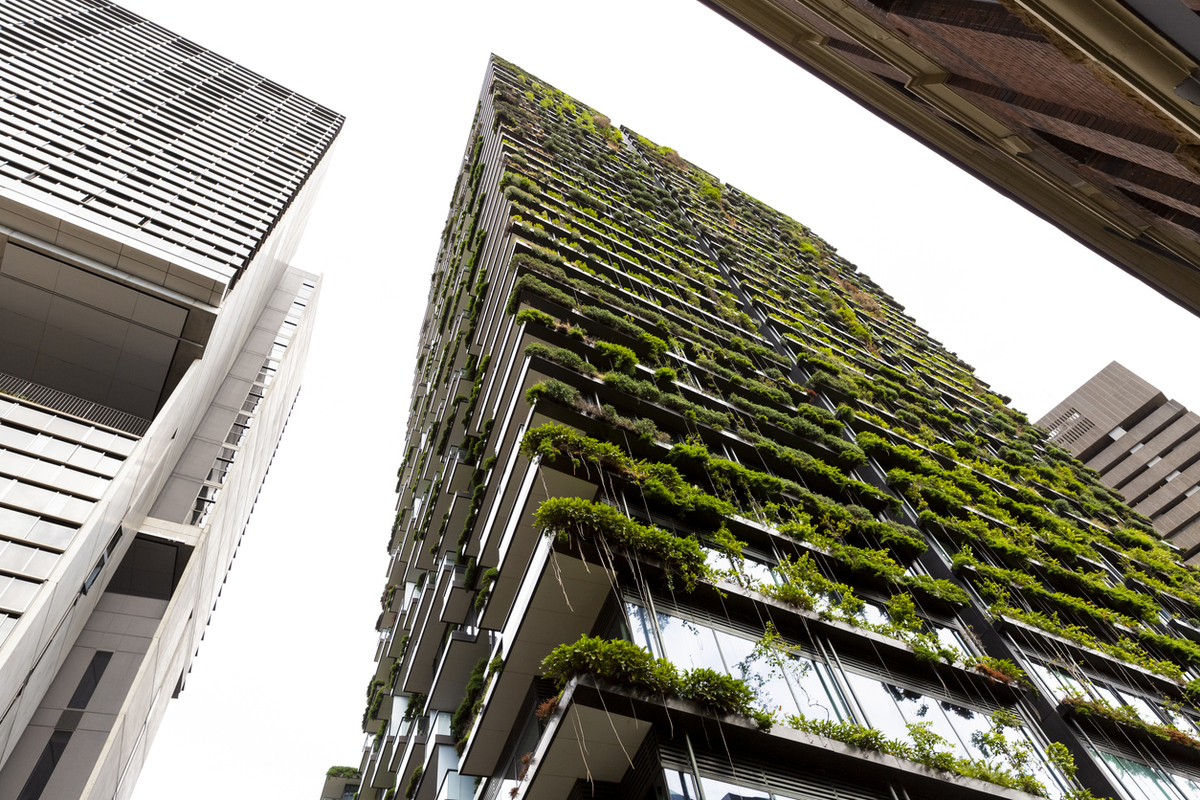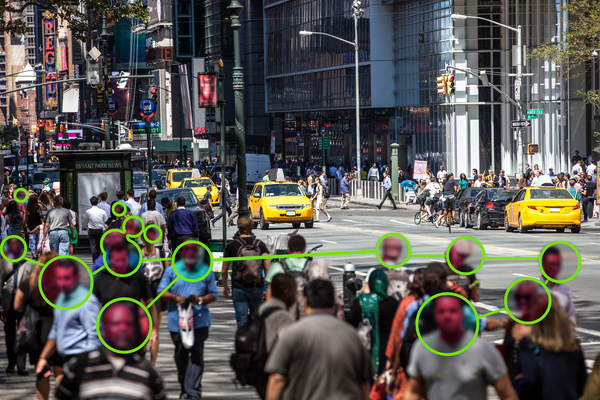The rise of biophilic architecture
Can we improve glass skyscrapers’ green credentials, or are plyscrapers and vertical forests the future?

Greenhouses – structures made of glass erected against a wall – were originally designed for tropical medical plants to be grown in the Netherlands in the 19th century.
The idea that spectacular glass curtain walls supported by steel and concrete structures could serve as edifices for humans came much later, when air-conditioning technology could make glasshouses habitable for humans across all seasons and geographies.
The mushrooming of skyscrapers in the 1960s and 1970s, however, wasn’t enabled soley by advances in air-conditioning technology, but also by energy being abundant and inexpensive at the time.
Today, in an era of energy shortages, skyscrapers with concrete shells are increasingly falling out of favour with investors and the environmentally conscious, thanks to both their operational and embodied carbon footprint – or, in other words, the carbon emissions it takes to build them and make them function as offices or flats.
Extending the days of glass-and-steel aesthetics
Legislators are increasingly lashing out against skyscrapers, either by introducing stricter emissions guidelines or setting standards in how much vertical greenery a glass-and-steel high-rise should come with.
A few years ago, for example, New York mayor Bill de Blasio set out to “ban the classic glass and steel skyscrapers that have contributed so much to global warming.”
Construction companies responded to the turning tide on skyscrapers by embracing technologies that can contribute to a lower carbon footprints for these buildings.
Attempts have been made to cancel out the environmentally unfriendly side-effects of high-rises by turning them into something “constructive”, such as capturing the wind they generate or solidifying the CO2 they emit.
However, few of these virtuous intentions have brought real benefits. One of the conspicuous reminders of these failures is Strata SE1, or “The Razor”, at Elephant and Castle, London, where the three turbines on the top of the building turned out to be an architectural flourish rather than a credible green energy project, and which were switched off straight away thanks to noise and astronomical maintenance costs.
More successful attempts to make skyscrapers environmentally more palatable include the use of photovoltaic glass collecting the sun’s energy, which would otherwise cause unbearably high temperatures inside, as well as triple-pane windows filled with argon or insulated with vacuum.
One Central Park in Sydney, which was named the best tall building in the world in 2014, even sports a so-called heliostat solution consisting of 40 motorised mirrors on top of the shorter tower, which reflect the light to the 300-plus mirrors cantilevered off the higher tower in order to distribute it uniformly on the ground plane of the building.
Wood taking centre stage
One Central Park also set a new trend that has since found followers around the globe. Its architect, Ateliers Jean Nouvel, commissioned French landscape artist Patrick Blanc to design the 1,120 square metres of vertical gardens that cover the surface of the building, incorporating into it 35,200 plants of 383 different species.
It was Italian architect Stefano Boeri who took the idea of biophilic building design to the next level by increasing occupant connectivity to the natural environment through the use of “direct nature”.
His first green buildings are the Bosco Verticale, two residential blocks in Milan, which, since they opened, have served as a blueprint for other similar biophilic buildings across Europe.
Boeri’s fascination with trees and architecture has led to a Smart Forest City project in Cancun, Mexico, where he is to wed green architecture with state-of-the art smart solutions to create a self-sufficient city for 130,000 inhabitants.
Not only does vegetation on high-rise buildings offset some of the CO2 emitted during the manufacturing of concrete components, it also reduces the build-up of heat around and inside the construction, as well as cleaning the air by absorbing dust particles and producing oxygen.
Hybrid and timber buildings
Despite historical examples of medieval cities built of wood burning down to ashes, innovative wood components are currently the most likely candidates to replace traditional, much less eco-friendly building materials.
The two innovative timber products that make the building of high-rise wooden structures possible are cross-laminated timber (CLT) and glue-laminated timber (Glulam). The former was developed by Austrian researcher Gerhard Schickhofer in the 1990s and has been used widely by European cities since the 2000s.
CLT is produced by layering up an odd number of wood layers at right angles and gluing them together, and is referred to as the concrete of the future. As industrial designer Jorge Calderón has explained, it can be thought of as plywood made of boards that can reach enormous dimensions – between 2.4 and four metres high, and up to 12 meters long.
Meanwhile, Glulam, patented in the 19th century, was given a new lease of life when the use of synthetic glue to stick together its layers oriented in the same direction became an option.
Unsurprisingly, timber building materials have been extensively subjected to tests for fire resistance, where they have proven to remain structurally stable when exposed to high temperatures thanks to charred timber insulating the rest of the structure.
The title of tallest timber structure was previously held by the 84-metre HoHo tower in Vienna, constructed in 2019, but cities in Scandinavia and the US have already broken its record.
London’s first plyscraper, the graceful Oakwood Timber Tower, planned against the backdrop of the brutalist concrete towers of the Barbican, hasn’t materialised yet, as rules on tall wooden buildings must first be relaxed for it to get the greenlight.
The race among metropolises to build the highest timber skyscrapers is already on, though, with a Japanese company announcing its plans to construct the world’s highest wooden building in Tokyo by 2041, sporting 70 storeys.
Despite radiating warmness and cosiness, some of the new wooden high-rises may look like plain Janes compared to the awe-inspiring glass-and-steel translucency of office buildings in the City and its counterparts around the world. But as technological innovation removes constraints, architects are bound to let their imagination run wilder, resulting in breathtaking timber structures that will give birth to a new, warmer, more environmentally conscious aesthetic.

Zita Goldman
Most Viewed
23-29 Hendon Lane, London, N3 1RT
23-29 Hendon Lane, London, N3 1RT
020 8349 4363
© 2024, Lyonsdown Limited. Business Reporter® is a registered trademark of Lyonsdown Ltd. VAT registration number: 830519543
Join the Business Reporter community today and get access to all our newsletters, and our full library of talk show episodes
Join the Business Reporter community today and get access to all our newsletters, and our full library of talk show episodes





